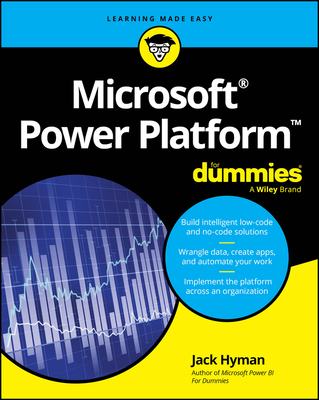Oracle BI 12C: Build Repositories Training in Hattiesburg
Enroll in or hire us to teach our Oracle BI 12C: Build Repositories class in Hattiesburg, Mississippi by calling us @303.377.6176. Like all HSG
classes, Oracle BI 12C: Build Repositories may be offered either onsite or via instructor led virtual training. Consider looking at our public training schedule to see if it
is scheduled: Public Training Classes
Provided there are enough attendees, Oracle BI 12C: Build Repositories may be taught at one of our local training facilities.
|
We offer private customized training for groups of 3 or more attendees.
|
||
Course Description |
||
| This Oracle BI 12c: Build Repositories training teaches you how to build
and verify the three layers of an Oracle Business Intelligence (BI)
repository, step-by-step. Expert Oracle University instructors will
begin by teaching you how to use the Oracle BI Administration Tool to
construct a simple repository. Learn To: - Construct the repository. -
Import schemas. - Design and build logical business models. - Expose
business models to users in the Oracle BI user interface. - Build
physical and logical joins, simple measures, and calculation measures. -
Validate your work by creating and running analyses. - Verify query
results using the query log. - Implement Oracle BI Server security. -
Manage the Oracle BI Server cache. - Set up a multi-user development environment.
Course Length: 5 Days
Course Tuition: $2800 (US) |
||
Prerequisites |
|
| Before taking this course, students should have basic knowledge of SQL, database design, dimensional modeling and data warehouse design principles. | |
Course Outline |
|
Repository Basics
- Exploring Oracle BI architecture components
- Exploring a repository's structure, features, and functions
- Using the Oracle BI Administration Tool
- Creating a repository
- Loading a repository into Oracle BI Server
- Installing the BI Client software
Building the Physical Layer of a Repository
- Importing data sources
- Setting up Connection Pool properties
- Defining keys and joins
- Examining physical layer object properties
- Creating alias tables
- Printing the physical layer diagram
Building the Business Model and Mapping Layer of a Repository
- Building a business model
- Building logical tables, columns, and sources
- Defining logical joins
- Building measures
- Examining business model object properties
- Printing the business model and mapping layer diagram
Building the Presentation Layer of a Repository
- Exploring presentation layer objects
- Creating presentation layer objects
- Modifying presentation layer objects
- Examining presentation layer object properties
- Nesting presentation tables
- Controlling presentation layer object visibility
Testing and Validating a Repository
- Checking repository consistency
- Turning on logging
- Uploading the repository through Enterprise Manager
- Executing analyses to test the repository
- Inspecting the query log
Managing Logical Table Sources
- Adding multiple logical table sources to a logical table
- Specifying logical content
Adding Calculations to a Fact
- Creating new calculation measures based on logical columns
- Creating new calculation measures based on physical columns
- Creating new calculation measures using the Calculation Wizard
Creating measures using functions
- Working with Logical Dimensions
- Creating logical dimension hierarchies
- Creating level-based measures
- Creating share measures
- Creating dimension-specific aggregation rules
- Creating presentation hierarchies
- Creating parent-child hierarchies
- Creating ragged and skipped-level hierarchies
Enabling Usage Tracking
- Creating the usage tracking tables
- Setting up the sample usage tracking repository
- Tracking and storing Oracle BI Server usage at the detailed query level
- Using usage tracking statistics to optimize query performance and aggregation strategies
Using Model Checker and Aggregates
- Using Model Check Manager
- Modeling aggregate tables to improve query performance
- Using the Aggregate Persistence Wizard
- Testing aggregate navigation
- Setting the number of elements in a hierarchy
Using Partitions and Fragments
- Exploring partition types
- Modeling partitions in an Oracle BI repository
- Using Repository Variables
- Creating session variables
- Creating repository variables
- Creating initialization blocks
- Using the Variable Manager
- Using dynamic repository variables as filters
Modeling Time Series Data
- Using time comparisons in business analysis
- Using Oracle BI time series functions to model time series data
Modeling Many-to-Many Relationships
- Using bridge tables to resolve many-to-many relationships between dimension tables and fact tables
Setting an Implicit Fact Column
- Ensuring the correct results for dimension-only queries
- Selecting a predetermined fact table source
- Specifying a default join path between dimension tables
Importing Metadata from Multidimensional Data Sources
- Importing a multidimensional data source into a repository
- Incorporating horizintal federation into a business model
- Incorporating vertical federation into a business model
- Adding Essbase measures to a relational model
- Displaying data from multidimensional sources in Oracle BI analyses and dashboards
Security
- Exploring Oracle BI default security settings
- Creating users and groups
- Creating application roles
- Setting up object permissions
- Setting row-level security (data filters)
- Setting query limits and timing restrictions
Cache Management
- Restricting tables as non-cacheable
- Using Cache Manager
- Inspecting cache reports
- Purging cache entries
- Modifying cache parameters and options
- Seeding the cache
Managing Metadata and Working with Service Instances
- Using BI Application Archive (BAR) files to export and import service instances
- Managing BAR files using WebLogic Scripting Tool (WLST) commands
- Managing service instances using WLST commands
Using Administration Tool Utilities
- Using the various Administration Tool utilities
- Using BI Server XML API to create XML representation of repository metadata
Multiuser Development
- Setting up a multiuser development environment
- Developing a repository using multiple developers
- Tracking development project history
Performing a Patch Merge
- Comparing repositories
- Equalizing objects
- Creating a patch
- Applying a patch
- Making merge decisions
|
Course Directory [training on all levels]
Technical Training Courses
Software engineer/architect, System Admin ... Welcome!
- .NET Classes
- Agile/Scrum Classes
- AI Classes
- Ajax Classes
- Android and iPhone Programming Classes
- Azure Classes
- Blaze Advisor Classes
- C Programming Classes
- C# Programming Classes
- C++ Programming Classes
- Cisco Classes
- Cloud Classes
- CompTIA Classes
- Crystal Reports Classes
- Data Classes
- Design Patterns Classes
- DevOps Classes
- Foundations of Web Design & Web Authoring Classes
- Git, Jira, Wicket, Gradle, Tableau Classes
- IBM Classes
- Java Programming Classes
- JBoss Administration Classes
- JUnit, TDD, CPTC, Web Penetration Classes
- Linux Unix Classes
- Machine Learning Classes
- Microsoft Classes
- Microsoft Development Classes
- Microsoft SQL Server Classes
- Microsoft Team Foundation Server Classes
- Microsoft Windows Server Classes
- Oracle, MySQL, Cassandra, Hadoop Database Classes
- Perl Programming Classes
- Python Programming Classes
- Ruby Programming Classes
- SAS Classes
- Security Classes
- SharePoint Classes
- SOA Classes
- Tcl, Awk, Bash, Shell Classes
- UML Classes
- VMWare Classes
- Web Development Classes
- Web Services Classes
- Weblogic Administration Classes
- XML Classes
Business Training Courses
Project Managers, Business Analysts, Paralegals ... Welcome!
Upcoming Classes
Gain insight and ideas from students with different perspectives and experiences.






